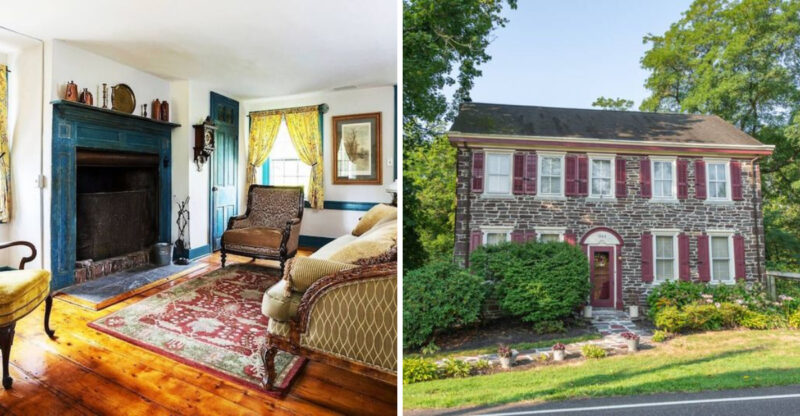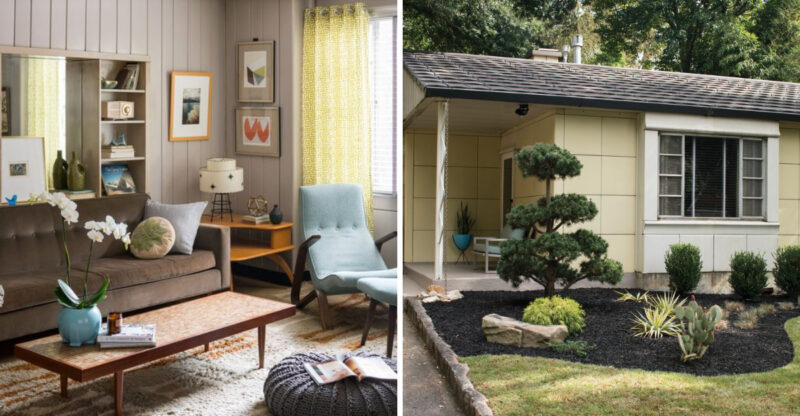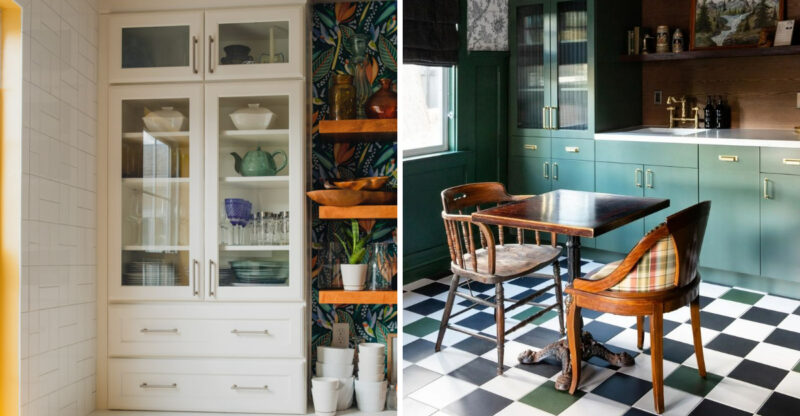5 Breathtaking Highlights Of Newport’s Vanderbilt Marble House
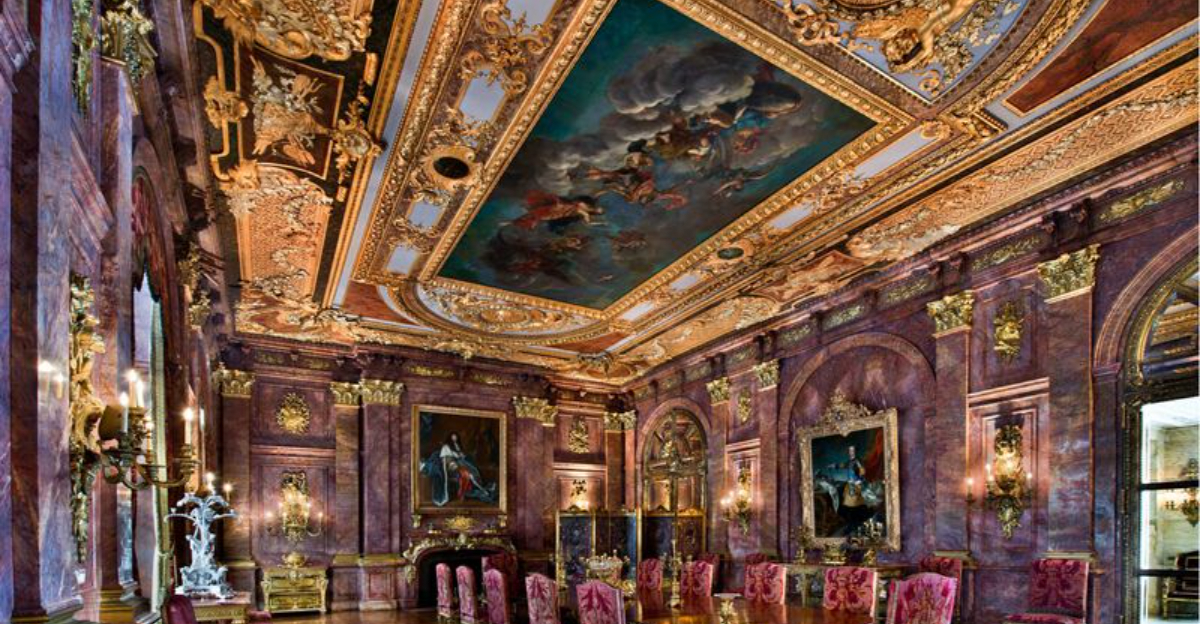
The Marble House stands as one of Newport’s most magnificent Gilded Age treasures.
Built in 1892 by William K. Vanderbilt as a birthday gift for his wife Alva, this opulent mansion cost a staggering $11 million (equivalent to over $300 million today).
With over 500,000 cubic feet of marble and inspired by the Petit Trianon at Versailles, this architectural masterpiece offers visitors a glimpse into America’s extravagant past.
1. Grand Marble Facade
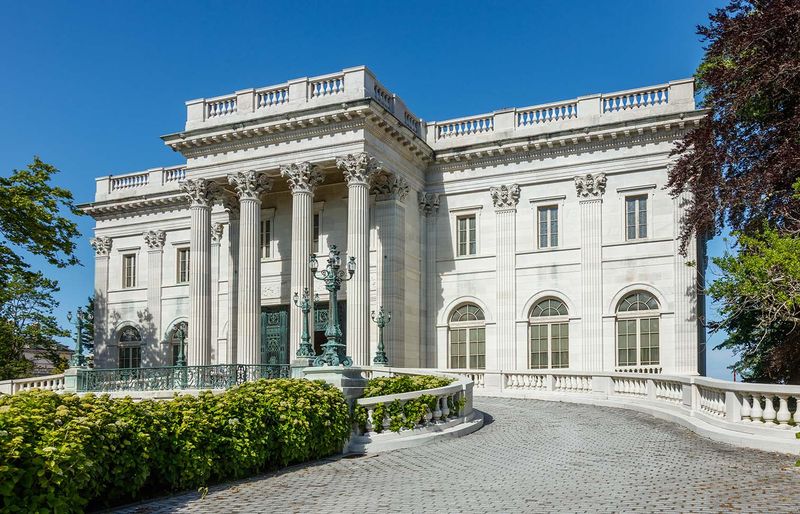
Standing before the Marble House feels like being transported to ancient Greece. The gleaming white exterior, crafted from 500,000 cubic feet of imported marble, captures sunlight in ways that make the building seem almost luminous against Newport’s coastal backdrop.
Workers spent four years constructing this magnificent facade, with skilled stonecutters hand-carving intricate details into each marble block. The columns supporting the grand portico draw inspiration directly from the Parthenon.
If you visit in late afternoon, the golden sunlight bathes the white marble in a warm glow that photographers find irresistible. This stunning exterior served as Vanderbilt’s statement to society announcing his family had arrived among America’s aristocracy.
2. Gilded Age Ballroom

Gold covers nearly every surface of the Marble House ballroom, creating an atmosphere of breathtaking opulence. Alva Vanderbilt designed this space to outshine her social rivals, particularly Caroline Astor, who previously reigned over Newport society.
The ballroom’s walls feature gold leaf applied by skilled European craftsmen who spent months perfecting every inch. Massive crystal chandeliers hang from the ceiling, casting prismatic light across the marble floor where America’s elite once waltzed during legendary Gilded Age parties.
During your visit, imagine the rustle of silk gowns and the orchestra playing as Newport’s finest families gathered here. This room exemplifies why the era earned its ‘gilded’ nickname beneath the dazzling surface lay the complex social politics of America’s nouveau riche.
3. Gothic Room

Hidden away from the mansion’s more classical spaces, the Gothic Room provides a medieval counterpoint to Marble House’s predominant style. William K. Vanderbilt used this room to display his collection of rare medieval and Renaissance treasures, creating a personal museum within his home.
Dark wood paneling and pointed arches immediately transport visitors to a European cathedral. The stained glass windows filter sunlight into colored patterns across intricately carved furniture and religious artifacts dating back to the 15th century.
Though smaller than other rooms in the mansion, this space reveals Vanderbilt’s passion for history and collecting. Many pieces here were acquired during the family’s European tours, when wealthy Americans frequently purchased historical treasures from cash-strapped European aristocrats looking to maintain their estates.
4. Library and Mezzanine
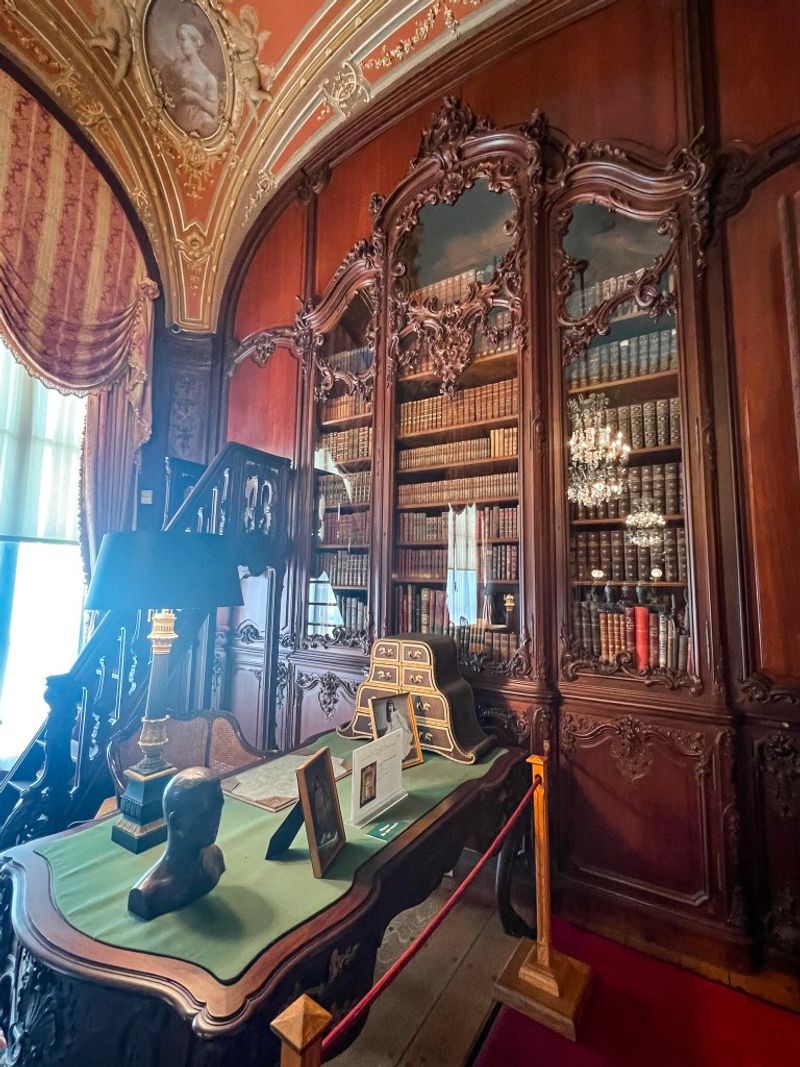
Books bound in finest Moroccan leather line the walls of this two-story intellectual sanctuary. The library served as William Vanderbilt’s retreat from the mansion’s more formal spaces, where he could entertain close friends or enjoy quiet moments with rare volumes from his extensive collection.
A wrought iron spiral staircase connects to the mezzanine level, where additional bookshelves stretch toward the ceiling. The rich mahogany paneling contrasts beautifully with the marble found elsewhere in the house, creating a warm, intimate atmosphere.
Did you know many books in this collection remain in their original positions? The library contains first editions and rare manuscripts that demonstrate the Vanderbilts’ intellectual interests beyond their famous wealth. This room’s smaller scale offers visitors a more personal glimpse into family life than the mansion’s grander spaces.
5. Dining Room
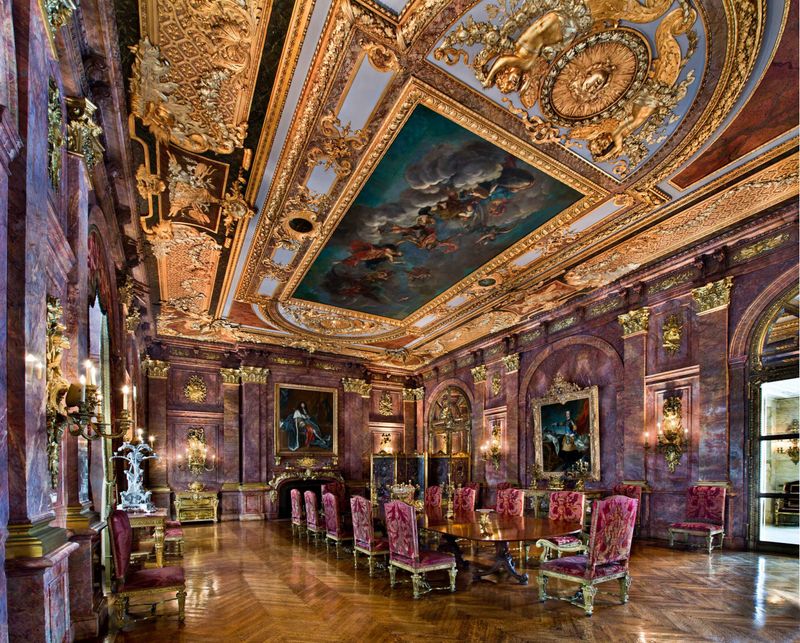
Pink Algerian marble walls make the Marble House dining room unlike any other space in America. This extraordinary room, where the Vanderbilts hosted elaborate dinner parties for up to 24 guests, showcases the family’s unparalleled wealth and their desire to create spaces that would impress even European royalty.
The ceiling features hand-painted scenes from mythology, while a massive silver and crystal chandelier illuminates the gleaming table below. Each place setting once included gold-rimmed Sèvres porcelain, sterling silver flatware, and crystal glassware specifically selected to complement the room’s unique color palette.
When visiting, look closely at the intricate marble inlays along the baseboards they contain over 14 different types of marble from quarries around the world. This dining room represents the pinnacle of Gilded Age entertaining, where multi-course meals could last over four hours.

